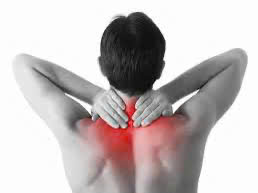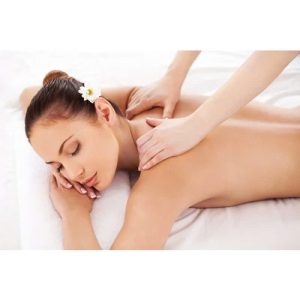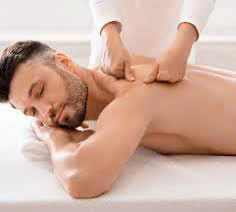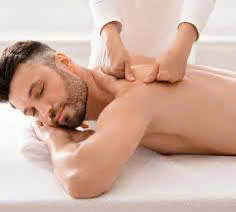Neck, Head and Shoulder Pain Holding You Back? Massage Can Help!
In today’s fast-paced world, many people suffer from chronic neck, head, and shoulder pain that can significantly hinder daily activities and overall well-being. Massage therapy has long been recognized as an effective method to alleviate pain, promote relaxation, and restore balance within the body. But how exactly can massage help you release your pain? What types of massage are best suited for neck, head, and shoulder discomfort? Why is massage important not only for pain relief but also for detoxification? And what crucial notes should you keep in mind before seeking massage therapy? This comprehensive guide aims to answer these questions in detail, empowering you to make informed decisions about your health.

Massage
Massage therapy, an ancient practice with roots spanning thousands of years, involves the manual manipulation of soft tissues to improve health and well-being. It encompasses a broad spectrum of techniques, from gentle strokes to deep tissue pressure, tailored to individual needs. In the context of neck, head, and shoulder pain, massage serves as a natural, non-invasive method capable of releasing muscular tension, reducing inflammation, and increasing circulation.
Engaging in regular massage can enhance physical and mental health by decreasing stress hormones, improving sleep quality, and boosting immune function. It is often integrated into holistic health regimens aimed at addressing chronic pain issues or simply promoting relaxation. Unlike medications that may come with adverse side effects, massage offers a gentle, nurturing approach that can yield lasting benefits when performed correctly.
Furthermore, massage is a highly customizable treatment, suitable for various populations including athletes, office workers, seniors, and those recuperating from injuries. Its versatility stems from the ability to adapt pressure, technique, and focus areas to suit each individual’s unique requirements. As a complementary therapy, massage not only alleviates pain but also encourages the body’s natural healing processes, making it an invaluable tool for maintaining overall health.
Benefits of Massage Therapy
- Relief from chronic muscle tension and tightness
- Improved blood flow and lymphatic drainage
- Reduction of inflammation and swelling
- Alleviation of nerve compression symptoms
- Enhancement of flexibility and range of motion
- Stress reduction and mental relaxation
Ultimately, massage offers a holistic approach that tackles both the symptoms and root causes of neck, head, and shoulder pain, fostering a pathway toward long-term health and comfort.

How massage can help you release your pain
Understanding how massage can help you release your pain requires insight into the physiological and neurological mechanisms involved. Chronic neck, head, and shoulder pain often stem from muscular tension, postural issues, nerve impingement, or emotional stress. Massage addresses these underlying factors through targeted work on soft tissues.
When muscles become tense or knotted, they can compress nerves or restrict blood flow, leading to pain and discomfort. Proper massage techniques help relax these muscles, releasing knots (known as trigger points), and restoring proper muscle length and function. This process not only alleviates current pain but also prevents future issues by improving muscle flexibility.
In addition to manual work on muscles, massage stimulates circulation, delivering oxygen and nutrients to tissues while flushing out metabolic waste products that contribute to inflammation. Enhanced circulation lowers inflammation and speeds recovery. Also, massage triggers the release of endorphins—natural painkillers—resulting in a profound sense of relief and well-being.
The neurological aspect shouldn’t be overlooked; massage modulates pain signals transmitted through the nervous system. By activating pressure receptors in the skin and muscles, massage helps diminish the perception of pain—a phenomenon known as the gate control theory. This dual action—physical relaxation combined with neurological modulation—makes massage particularly effective for persistent neck, head, and shoulder pain.
Furthermore, massage encourages body awareness and encourages patients to maintain better posture and movement patterns outside therapy sessions. Integrating massage with stretching and posture correction can create significant, lasting improvements in pain levels.

How Does Massage Work Physiologically?
- Releases muscle tension and break down adhesions
- Enhances blood circulation and oxygenation
- Promotes lymphatic drainage for detoxification
- Stimulates nervous system pathways to reduce pain perception
By implementing a tailored massage plan, patients can experience rapid relief and develop resilience against future episodes of pain.
The Role of Psychological Factors
Pain isn’t purely physical; emotional stress and mental health play vital roles. Massage therapy promotes relaxation and reduces cortisol levels, helping individuals manage stress—an often overlooked contributor to musculoskeletal pain. Relieving psychological tension translates into physical improvements, creating a cycle of healing and relaxation.
Which types of massage for suitable for neck, head, shoulder pain
Choosing the right type of massage is crucial to effectively target pain in the neck, head, and shoulder regions. Not all therapies suit every individual; understanding the differences helps in making the best therapeutic decision.
Swedish Massage is renowned for its gentle, relaxing strokes designed to improve circulation and reduce stress. It’s excellent for superficial tension and general relaxation but may not penetrate deep enough for chronic or severe muscle knots in the neck and shoulders.
Deep Tissue Massage employs firm pressure to access deeper layers of muscle and fascia. It’s particularly effective for chronic pain, muscle tension, and adhesions in the neck and shoulders. The technique can be more intense, often involving slow, deliberate strokes to release entrenched knots.
Trigger Point Therapy focuses on specific tender points within muscles that refer pain elsewhere. For neck, head, and shoulder pain, trigger point work can dramatically relieve localized pain and improve mobility by releasing these hyper-irritable spots.
Shiatsu and Acupressure utilize finger pressure along meridian points, promoting energy flow and relieving muscular tension. These techniques are beneficial for pain associated with stress and muscular imbalance in the upper body.
Myofascial Release targets fascia restrictions—tight connective tissue that can contribute to pain. Releasing fascial adhesions improves overall mobility, especially beneficial for long-standing neck and shoulder issues.
Here’s a comparative table summarizing key features:
| Type of Massage | Depth of Penetration | Ideal for | Intensity |
|---|---|---|---|
| Swedish | Superficial to moderate | General relaxation, mild tension | Gentle to moderate |
| Deep Tissue | Deep | Chronic pain, muscle knots | Firm, sometimes intense |
| Trigger Point | Localized | Specific pain spots | Variable, often targeted |
| Shiatsu / Acupressure | Moderate to deep | Energy balance, stress-related tension | Gentle to moderate |
| Myofascial Release | Moderate to deep | Fascia restrictions, long-term pain | Gentle, sustained pressure |
Selecting an appropriate massage depends on individual needs and pain severity. For acute discomfort, gentle approaches may suffice, while chronic or deep-seated pain benefits from deeper, focused techniques.

Head shoulder pain
Head, shoulder, and neck pain often co-occur due to interconnected muscular and postural issues. The complex anatomy of this region makes it susceptible to structural and functional imbalances, which massage can effectively address.
Common causes include poor posture from prolonged computer use, emotional stress, trauma, or repetitive movements. Muscles such as the trapezius, levator scapulae, sternocleidomastoid, and suboccipitals tend to become taut and strained, leading to discomfort, headaches, and limited mobility.
Massage techniques and strategies specifically target these muscles, releasing tension and improving vascular flow. For example, trigger point therapy can eliminate localized pain zones, while myofascial release restores tissue flexibility. Combining these methods often provides holistic relief.
Incorporating techniques such as stretching after massage sessions can maintain the benefits and prevent recurrence of pain. Additionally, postural correction advice helps individuals modify daily habits that contribute to muscle imbalance.
Psychological factors like stress and anxiety exacerbate head and shoulder pain by promoting muscle tightness. Massage, through both physical manipulation and relaxation techniques, addresses these emotional contributors, creating a comprehensive pain management plan.
The Impact of Posture on Head and Shoulder Pain
Poor ergonomics at work or home can result in rounded shoulders and forward head posture. Over time, mechanical strain accumulates, leading to persistent pain and headaches. Addressing postural issues through targeted massage helps to realign muscles and tissues, reducing strain.
Self-care practices such as ergonomic adjustments, regular breaks, and stretching complement massage therapy for sustained relief. Emphasizing awareness of posture encourages better muscle balance and reduces the risk of future pain episodes.
Why massage is important for help you detox
Beyond pain relief, massage plays a vital role in the body’s detoxification process. The lymphatic system, responsible for clearing toxins and waste, relies heavily on muscle movement and circulation to function efficiently. Massage stimulates lymph flow, promoting the removal of metabolic waste products from tissues.
Detoxification starts with removing accumulated toxins, which can contribute to inflammation and further muscular tension. Regular massage sessions help flush out these substances, potentially reducing pain and swelling, especially in overused or stressed areas like the neck and shoulders.
Additionally, massage enhances blood circulation, ensuring fresh oxygen and nutrients reach tissues while metabolizing waste products. This improved circulation supports cellular repair and immune responses, contributing to overall health. The process of detox isn’t limited to physical cleansing; it also involves mental and emotional relaxation, which massage promotes by reducing cortisol and stress hormones.
The benefits of massage extend to improving sleep quality, which is essential for detoxification and recovery. Sleep allows the body to regenerate tissues and clear toxins. Hence, massage indirectly supports detoxification by fostering proper rest and recovery.
How Massage Facilitates Detox
- Stimulates lymphatic drainage for toxin removal
- Enhances blood flow and oxygen delivery
- Reduces inflammation through waste elimination
- Promotes relaxation to lower stress-related toxins
In summary, massage isn’t just about immediate pain relief—it’s an integral component of a healthy lifestyle that assists your body’s natural detoxification pathways for long-term vitality.
What important note you need to know
Before embarking on a massage therapy journey for neck, head, and shoulder pain relief, there are key considerations to ensure safety and effectiveness. Understanding these notes helps maximize benefits while avoiding potential pitfalls.
Communication with your massage therapist is vital. Clearly describe your symptoms, previous injuries, and any health conditions. This information guides the choice of techniques and pressure to avoid aggravating sensitive areas or underlying issues such as osteoporosis, infections, or blood clotting disorders.
Contraindications exist for certain populations. Pregnant women, individuals with bleeding disorders, or those with acute infections should consult healthcare providers before scheduling massage. In some cases, modifications are necessary to prevent adverse effects.
Post-massage care is crucial. Hydrating well helps flush out toxins released during therapy. Rest and gentle stretching can prolong benefits. Avoid strenuous activity immediately after a deep massage to prevent soreness or injury.
Frequency and consistency are important. Regular sessions tailored to your condition produce better long-term results than sporadic treatments. Your therapist can help develop a maintenance plan based on your specific needs.
Personal comfort and preferences should be prioritized. The level of pressure, areas to focus on, and techniques used should align with your comfort zone. If discomfort arises, communicate immediately.
Informed choices extend beyond professional therapy. Incorporate ergonomic practices, stretching routines, and lifestyle adjustments to complement massage therapy and sustain improvements.https://jobedubaispa.com/proper-massages/
Conclusion
Massage therapy provides a multifaceted approach to alleviating neck, head, and shoulder pain, offering both physical and psychological benefits. By understanding how massage can help you release your pain, selecting suitable types of massage—like deep tissue, trigger point, or myofascial release—and recognizing the importance of massage for detoxification, individuals can harness its full potential. Equally, awareness of essential precautions ensures safety and maximizes therapy outcomes. As a natural, holistic method, massage not only eases discomfort but also promotes overall wellness, making it a vital component in managing musculoskeletal pain and achieving a healthier body and mind.
Incorporate regular *massage into your health routine to experience lasting relief and enhanced vitality. Remember, understanding your body and working with trained professionals ensures you get the most out of this powerful healing tool.https://www.google.com/knowledgegraphshares?sca_esv=41514daaec8f90aa&hl=vi&gl=vn&output=search&kgmid=/g/11ld8cgf50&q=Citymax+spa-+thai+massage-massage+home+service+bur+Dubai&shndl=30&shem=lspt11&source=sh/x/loc/act/m1/5&kgs
